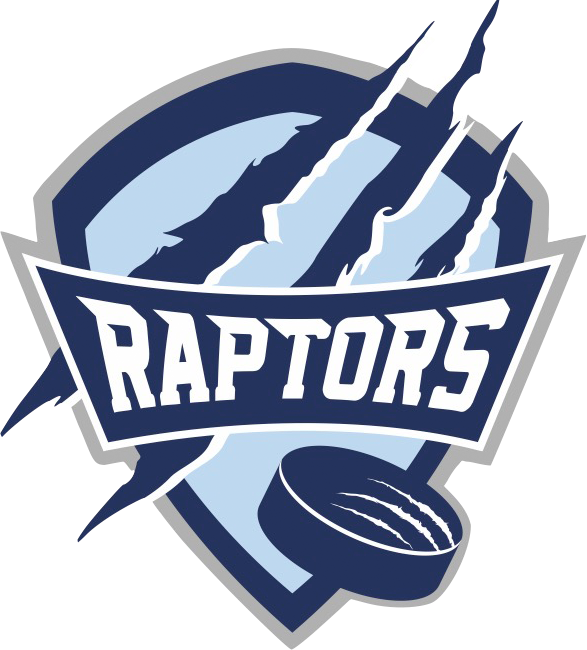Attack – a play to set up and take a shot on net. Occurs once you have entered the opponents’ zone.
B/O – Break out – the play we make to get out of our defensive zone and begin an attack
Box – refers to a penalty kill strategy where we align four players in a square, with two defensemen near the net, and two forwards in front of them.
Boards – Obviously, the boards are the wall around the outside of the rink, but when a coach or teammate yells “Boards!,” they mean that there is a good passing option to move the puck up the boards.
Change – switch the players on the ice. Normally, players should know when to change (rarely longer than a 30-40 second shift), but coaches may yell “CHANGE” or “FORWARDS CHANGE,” for example. Sometimes players are super-focused, so if the coaches are yelling it, it’s a good time to do it.
Chip – “Chip” is used to tell a player who has the puck or about to get the puck to send the puck up against the nearest wall to get around an opponent. If you hear “Chip,” you should assume that coach or a nearby player sees that if you carry the puck, you’re about to run into an opponent. Sometimes a coach will yell “Chip” to a player with their head down along the wall who is about to get hit by an opponent. Another player ahead of you might yell “Chip!” to you so you pass to him indirectly off the boards to avoid an opponent.
Curl – a forward skating motion that allows a player to support a teammate and get closer to a puck without having to stop and start again (which takes a lot of energy). A curl is a good positional move to ensure your timing is right to be in a good support position at the right time, and keep energy up with forward motion.
DZ – Defensive Zone – where we are defending
Diamond – refers to a penalty kill strategy where we align four players into a diamond shape, with one defenseman in front of the net, two players roughly near the face off dots, and one player in the high slot
Dorsiflexion – the ankle represents the most important component of skating proficiency. It’s critical to create a positive shin angle (less than 90 degrees) to maximize control, power, and speed in your skating stride.
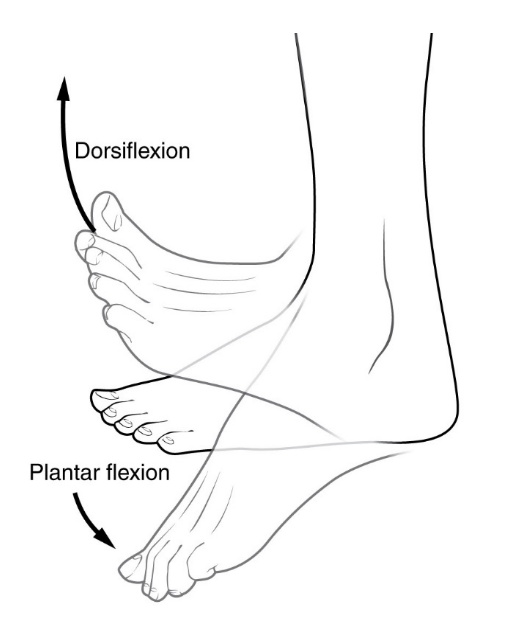
Dump – to pass or shoot the puck into the other team’s zone, but not to a specific teammate. You want to dump the puck once you’ve crossed the center red line (if you do it from our zone, the refs will call icing), and past the other team’s defense. This creates a situation where we can race to retrieve the puck and regain control. This is an offensive tactic.
Dump and Change – to pass or shoot the puck deep into the opponent’s zone and use the opportunity to change our lines. As above, you must send the puck after you’ve crossed the center red line or be called for icing. This is a defensive tactic to relieve players that have been stuck out for a long time.
East-West – moving laterally on the rink towards a side-wall, as opposed to North-South, which is moving towards one of the nets. Moving perpendicular to the slot line.
Entry – or Zone entry – the act of entering the offensive zone, getting the puck, under control, across the opponents blue line. Once you have entered the zone, you can attack.
F1, F2, F3 – Refers to forwards’ positions in relation to the puck. F1 is closest to the puck (or the puck carrier), F2 is next closest, and F3 is third. When we are on attack, it doesn’t matter if a forward is a center, left wing, or right wing – they can rotate as needed through the offensive zone. Typically, F1 is the forward heading towards the net, F2 is balancing him on the opposite side, and F3 is trailing the other two to catch a pass or rebound.
F/O or FO– Face-off
High – a direction in a zone – means towards center ice, away from the net
High Slot – Refers to a general space in front of the net, beyond the face off dots, but short of the blue line. It’s a key location for passes and rebounds, which makes it an excellent location to shoot or make a play. In the offensive zone, it is important that one of the three forwards rotate into the high slot while we are on attack.
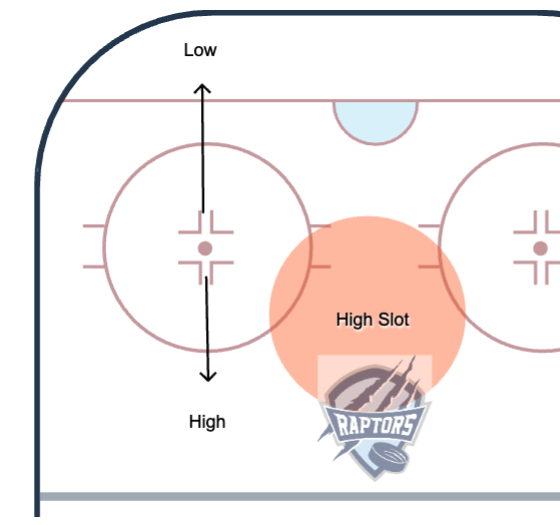
Low – a direction in a zone – means away from center ice, towards the end wall behind the net
Mohawk – skating sideways with legs opened up and both toes pointing out
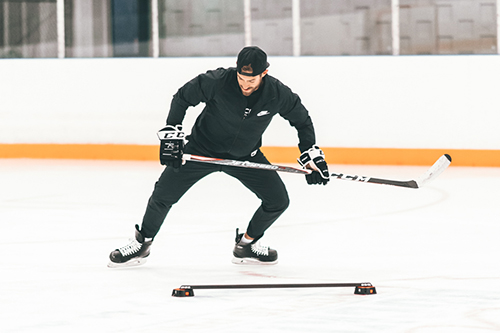
Move It – If a Raptors player has the puck, and a Raptors coach shouts “MOVE IT,” it means that there is a teammate ahead that is open, and the puck carrier should look to pass (or “headman”) the puck forward. Passing the puck is almost always faster than skating it.
North-South – moving vertically on the rink towards either end, as opposed to East-West, which is moving laterally towards a side wall. Moving in parallel to the slot line.
NZ – Neutral Zone
OZ – Offensive Zone – where we are attacking
Partner – refers to a defenseman’s partner. “Partner” is used to tell a defenseman who has the puck to pass it to the other defenseman. Also referred to as a “D to D pass”
Pressure – coaches will yell “Pressure!” when the opposing team has the puck, and we want the closest Raptor to go after that player and force him to make a mistake. The idea is to make it difficult for the other team to set up a play or make an easy pass.
Recovery – while skating, after a leg completes a stride or “push,” this is the motion it makes to return to the start of the next stride. The power you put into your recovery motion is a huge factor in your skating speed.
Seam – a space of clear ice where you can pass to your teammate between opponents. If your opponent is facing a seam, your pass must give them more space in case they reach with their stick to intercept your pass. If an opponent has his back to the seam, you can pass very close to the back of their skates.
Slot Line – an imaginary vertical line running from one net to the other net. Making plays where a pass is made from one side of the slot line to the other side forces the goalie to move, which opens up space for a shot. In Canada, called the “Royal Road.”
Strong or Strong Side – if you’re looking at the net from center ice, there are two sides, left and right of the zone. The Strong Side refers to the side where the puck is. The other side is the weak side.
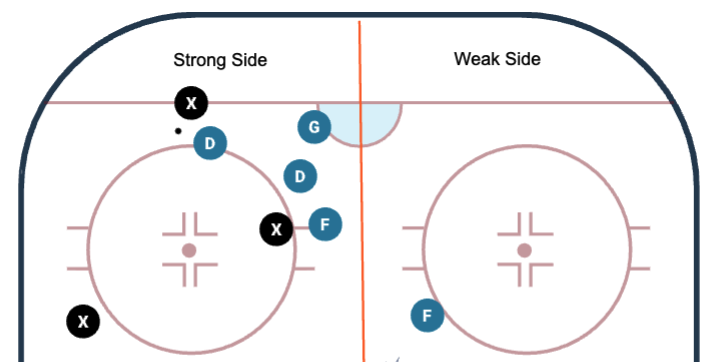
Trail or Trailer – a player slightly behind an offensive rush. A trailer is sometimes a good option to receive a pass because the opponents are less likely to cover him.
Triple Flexion/Triple Extension – an important concept of proper skating involves flexing and extending all three joints: the hip, the knee, and ankle (dorsiflexion).
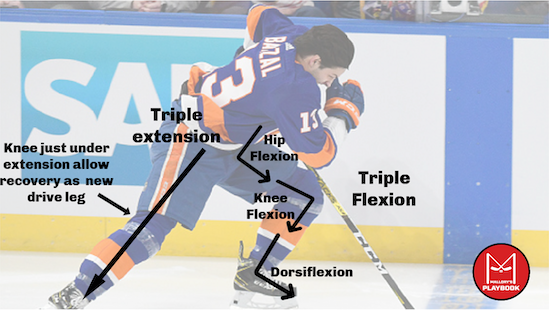
Weak or Weak Side – if you’re looking at the net from center ice, there are two sides, left and right of the zone. The Weak Side refers to the side where the puck is.
Wide – a coach will yell “Wide!” to get our puck carrier to skate hard around an opponent rather than try to make a stick move to get around them. Entering the offensive zone in the middle usually means you’re more easily checked by the opposing team. You’re more likely to be successful entering the zone on the sides.
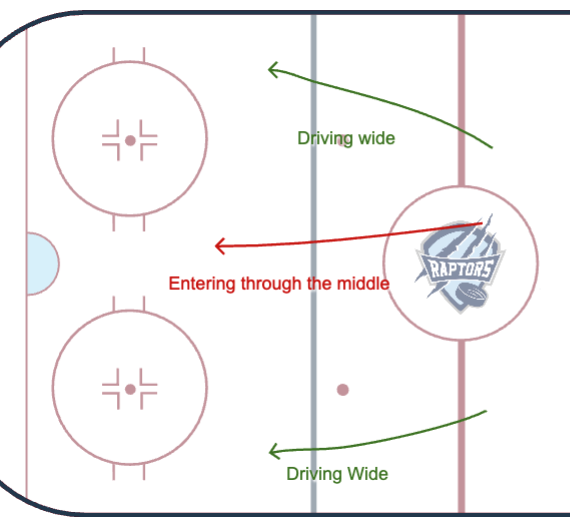
Wheel – coaches will yell “Wheel!” when our puck carrier has open ice to skate the puck. The player should skate forward as fast as possible.
